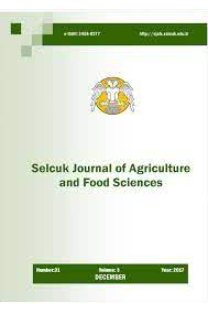The Toxic Effects of Lead on Seedling Growth Development of Euphorbia Hirta Forsk (Weed) and Sporobolus Coromandelianus (Retz.) Kunth (True Grass)
The Toxic Effects of Lead on Seedling Growth Development of Euphorbia Hirta Forsk (Weed) and Sporobolus Coromandelianus (Retz.) Kunth (True Grass)
Lead is considered a toxic heavy metal and released in the air, water and soils due to auto wheels, industrial and anthropogenic activities which influence on plant growth, fauna and environment. It is hypothesized that plants are capable of showing different responses of toxicity and tolerance to metals stresses. The objective of this study is to investigate the influence of one of the highly toxic
heavy metal, lead (Pb) on the seedling growth of native plant species, Euphorbia hirta Forsk and Sporobolus coromandelianus (Retz.) Kunth in pots as there are very few data available in the literature on this toxicity subject. It is important to compare both genotype under various level of lead treatment. The seedlings of E. hirta and S. coromandelianus showed different effect when treated with 20, 40, 60, 80, 100 as compared without 0 ppm concentrations of lead. The results of the present studies showed the statistically significant (p<0.05) influences of lead 40 ppm treatment on number of leaves, leaf area and seedling dry weight of S. coromandelianus. Lead treatment at 60 ppm significantly reduced shoot, root and and total seedling height of S. coromandelianus. Lead treatment at 40 ppm also showed significant decreased on shoot, seedling length and number of leaves of E. hirta. The seedlings of E. hirta and S. coromandelianus were also used for the development of tolerance indices percentage to different level of lead. The seedlings of E. hirta and S. coromandelianus showed changes in values of tolerance indices. Lead treatment at 20 ppm showed a positively decreasing influence on the tolerance indices of E. hirta and S. coromandelianus. Increase in lead level at 80 – 100 ppm highly decreased the tolerance indices percentage of E. hirta and S. coromandelianus as compared to control. The seedlings of S. coromandelianus showed tolerance (68.38%) as compared to E. hirta (50.79%) to lead at 100 ppm. The obtained data could be useful for a wide range of researchers working in this aspect.
